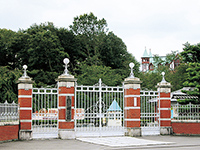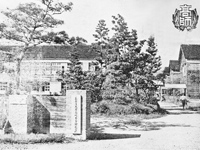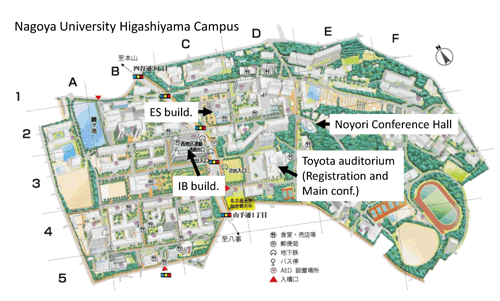
ABOUT NAGOYA UNIVERSITY

Main gate of the Eighth Higher School

the Okazaki Higher Normal School

Appearance of the operation
in the Aichi Medical College
Nagoya University
Nagoya University began its history in 1871 with its temporary hospital standing on a site where the conference chamber for the former Nagoya clan once stood, and the temporary medical school standing on a site where the magistrate's office for the former Nagoya clan once stood. Thereafter, many transitions took place, and the Aichi Medical College was established in 1920. In 1931, the management of the Aichi Medical College was transferred to the national government and the Nagoya Medical College was newly established in the same year. In 1939, the Nagoya Imperial University was established with the addition of the School of Science and Engineering and the School of Medicine, thus absorbing the Nagoya Medical College.In 1942, the School of Science and Engineering was divided into the School of Engineering and the School of Science, and the name of the university was changed to Nagoya University in 1947. With the educational reform, the former Nagoya University, the attached medical school, the Eighth Higher School, the Nagoya Commercial College and the Okazaki Higher Normal School were integrated in 1949, and Nagoya University commenced under a new system of 6 Schools: the School of Letters, School of Education, School of Law & Economics, School of Science, School of Medicine and School of Engineering. Thereafter, the School of Law & Economics became independent schools in 1950 and the School of Agricultural Science was established in 1951, totaling 8 Schools, evolving into a larger comprehensive university.
In 1993, an extensive educational reform took place in line with the reorganization of the general education program, and the School of Informatics and Sciences was established as the 9th School responding to the demands of the age, as well as introducing a 4-year continuous education system for all schools (6-year continuous education for the School of Medicine) abolishing the College of General Education.
Graduate schools also went through system reforms after WWII, establishing 2-year masters and 3-year doctorate programs in the Schools of Letter, Education, Law, Economics, Science and Engineering in 1953. Graduate School was also established in the Schools of Medicine and Agricultural Science, and all eight schools, at the time, offered continuous education into graduate programs.
Stand-alone graduate schools without undergraduate programs were also established; International Development in 1991, Human Information Science in 1992, Mathematics in 1995, Language and Culture in 1998, Environmental Science in 2001 and Information Science in 2003 (abolishingHuman Information Science). Currently, there are 13 graduate schools.Other facilities include 3 subsidiary research institutes, 2 facilities open to the public and 16 research centers.
In 2004, Nagoya University became a national university with a new governing structure.
(from http://www.nagoya-u.ac.jp/en/about-nu/history-data/history/)








